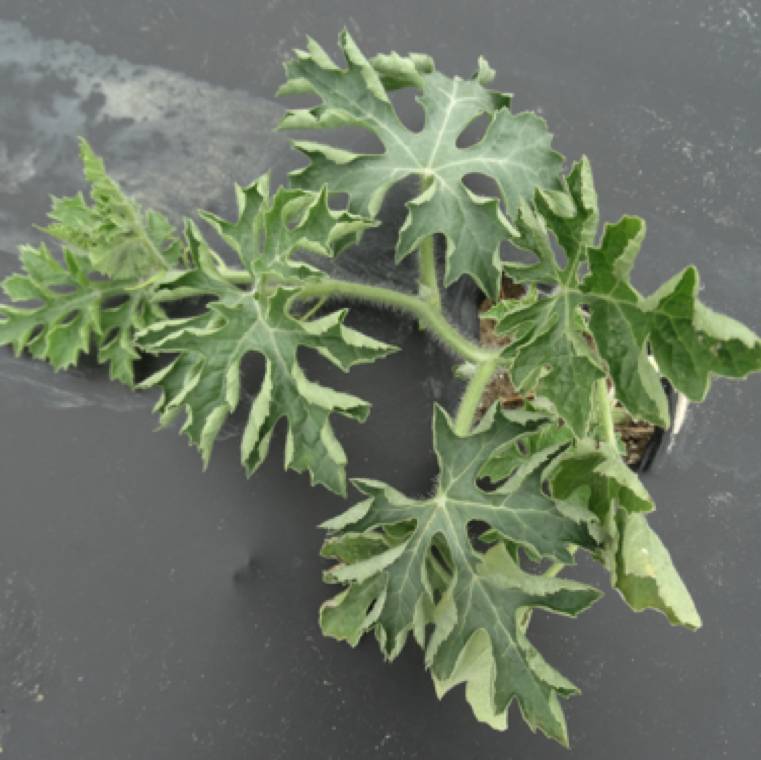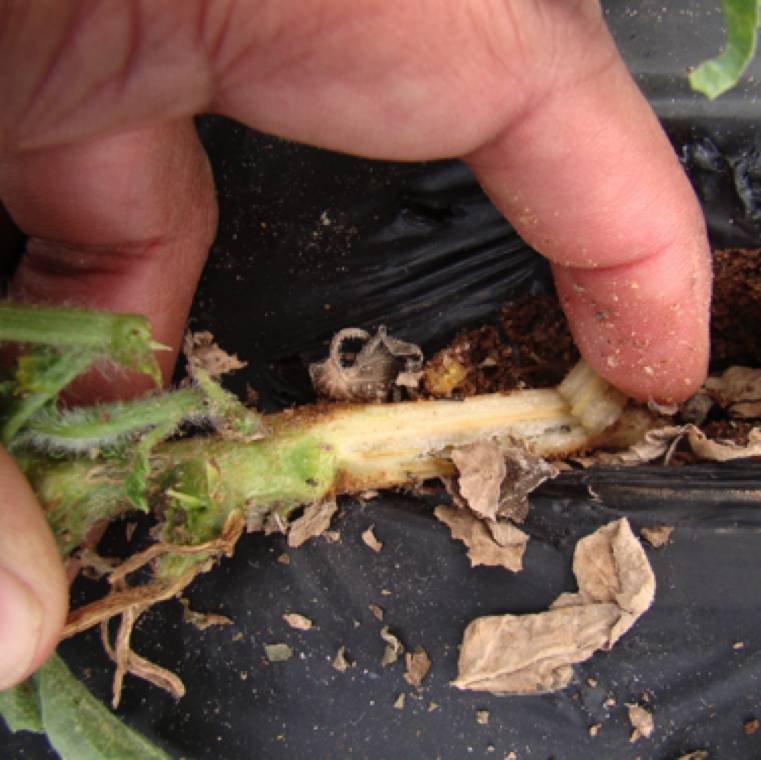Fusarium wilt is a serious fungal disease affecting watermelon plants, caused by the soil-borne pathogen Fusarium oxysporum. This disease can strike at various stages of plant growth, from seedlings to mature plants, and often results in significant yield losses.
Symptoms:
- Damping Off: In fields with high levels of infection, young plants may experience damping off, causing them to wilt and die shortly after emergence.
- Unilateral Wilting: Wilting often starts on one side of the plant, with leaves on that side turning yellow and soft, while the other side appears healthy.
- Transplant Wilting: Infected transplants may show yellowing and wilting, often due to contaminated seed, seedling trays, potting media, or equipment.
- Progressive Desiccation: Affected watermelon vines initially stay green, then turn yellow, progressively drying out until the plant is completely wilted and brown.
- Vascular Discoloration: Discoloration of the vascular tissues at the base of the stem is a key symptom, although other soil-borne pathogens can also cause this.
- Stunted Growth: Plants affected by Fusarium wilt often show stunted growth and patchy distribution in the field, resulting in poor ground coverage.
- Initial Water Stress Symptoms: During the early stages of infection, plants may exhibit symptoms of water stress, such as leaf curling and wilting.
- Moderate Wilting and Leaf Appearance: Moderately wilted plants take on a dull-green color in the field. Wilting leaves feel soft to the touch, while healthy leaves are bright green and crunchy.
Spread and Development:
Fusarium wilt spreads quickly in cool soil conditions when the pathogen population is high. Symptoms may appear within one to two weeks after transplanting. The disease can be introduced through contaminated seeds, trays, or soil. Although plants may recover as soil temperatures rise, the infection can delay fruit maturity and reduce yield.
Impact:
Fusarium wilt leads to weakened plants, reduced fruit quality, and lower yields. The infection also disrupts ground coverage in the field, impacting overall crop health.
Management strategies include field sanitation, crop rotation, and using resistant varieties to minimize the effects of Fusarium wilt in watermelon crops.













